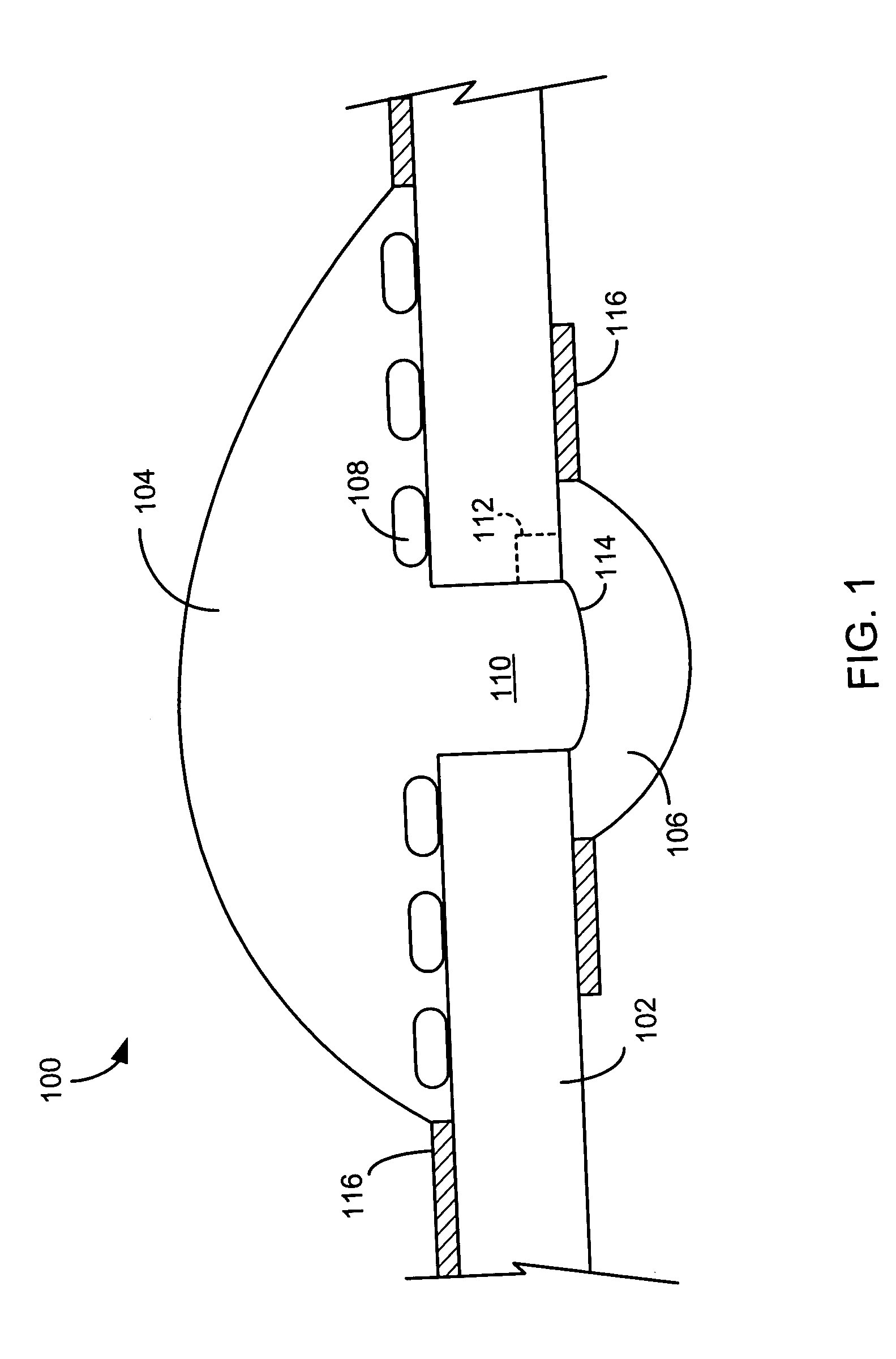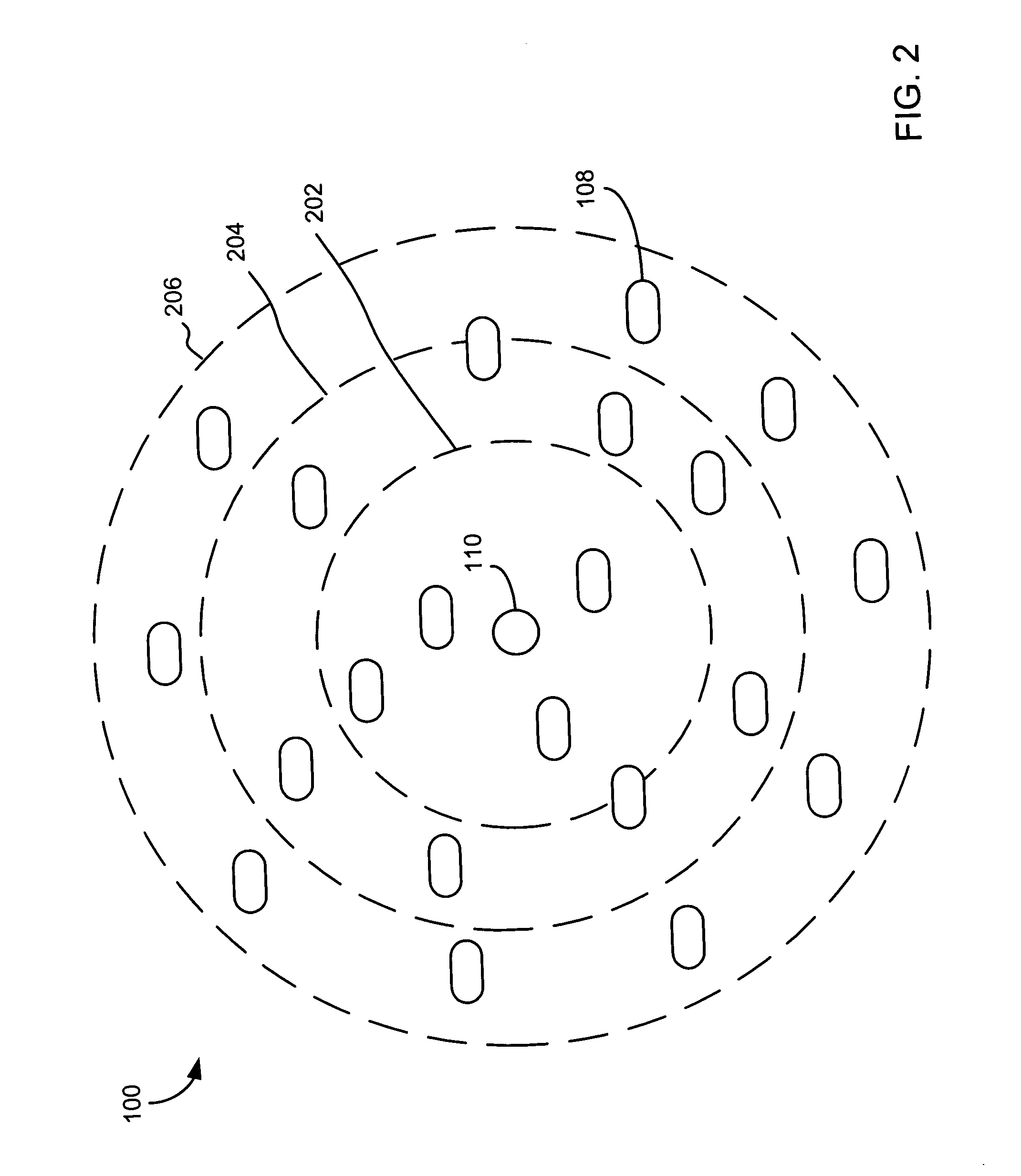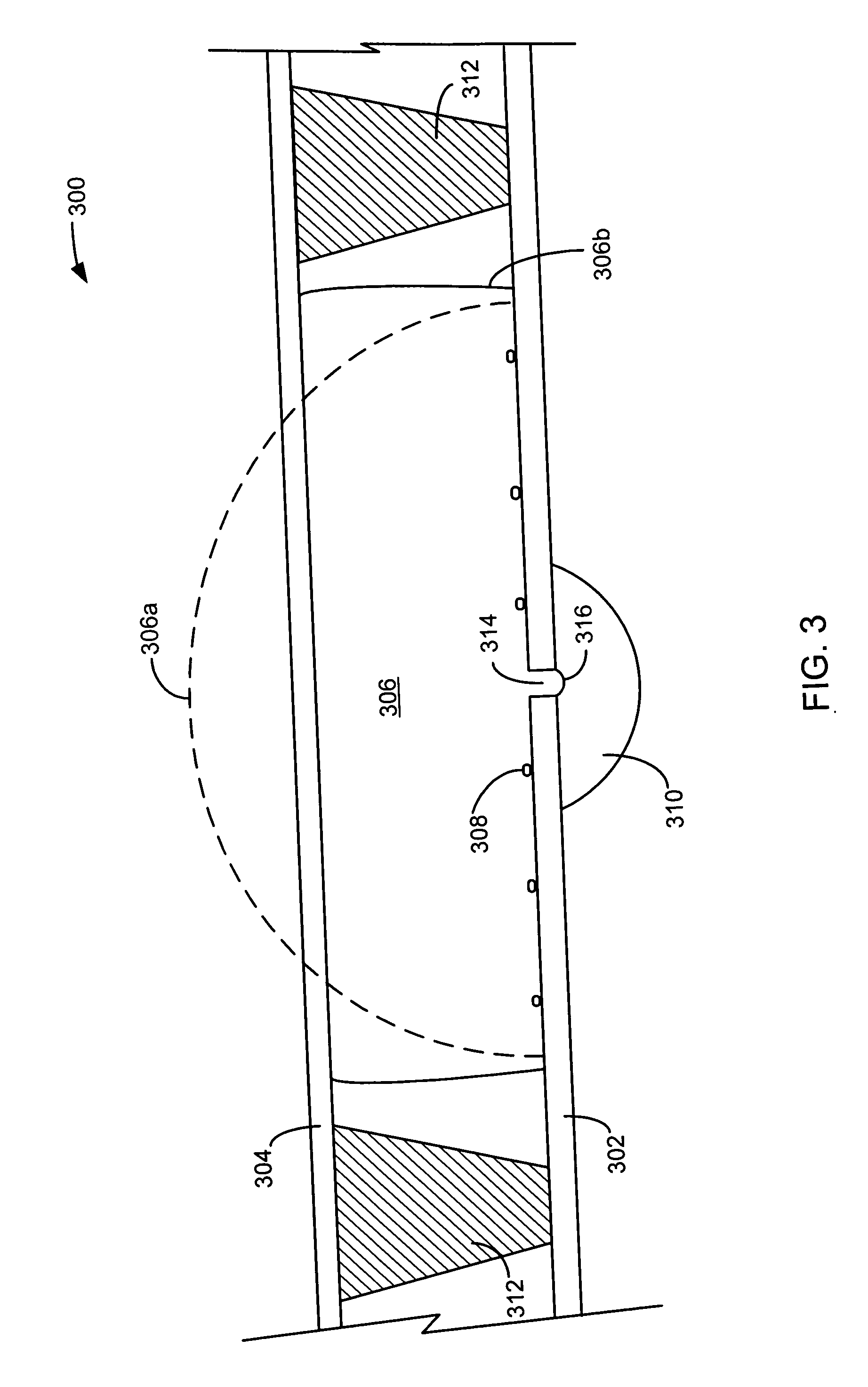Point source diffusion cell activity assay apparatuses and methods
- Summary
- Abstract
- Description
- Claims
- Application Information
AI Technical Summary
Benefits of technology
Problems solved by technology
Method used
Image
Examples
Embodiment Construction
[0052]FIG. 1 illustrates one site of a multi-site assay apparatus 100 according to an embodiment of the present invention. As shown, assay apparatus 100 includes a film 102, an opening 110 through film 102, cell suspension media 104 disposed on a first side of film 102 over opening 110, cells 108 of a cell suspension settled on the first side of film 102, and test compound solution 106 disposed on a second side of film 102 over opening 110. The test compound solution 106 initially contacts cell suspension media 104 at the meniscus 114 of cell suspension media 104 formed over opening 110 on the second side of film 102. Optionally, as shown in FIG. 1, film 102 could have hydrophobic coatings 116 to help keep cell suspension media 104 and test compound solution 106 in place.
[0053] After the initial contact between cell suspension media 104 and test compound solution 106, the test compound solution 106 diffuses into cell suspension media 104 through opening 110, and to the first side o...
PUM
 Login to View More
Login to View More Abstract
Description
Claims
Application Information
 Login to View More
Login to View More - R&D
- Intellectual Property
- Life Sciences
- Materials
- Tech Scout
- Unparalleled Data Quality
- Higher Quality Content
- 60% Fewer Hallucinations
Browse by: Latest US Patents, China's latest patents, Technical Efficacy Thesaurus, Application Domain, Technology Topic, Popular Technical Reports.
© 2025 PatSnap. All rights reserved.Legal|Privacy policy|Modern Slavery Act Transparency Statement|Sitemap|About US| Contact US: help@patsnap.com



